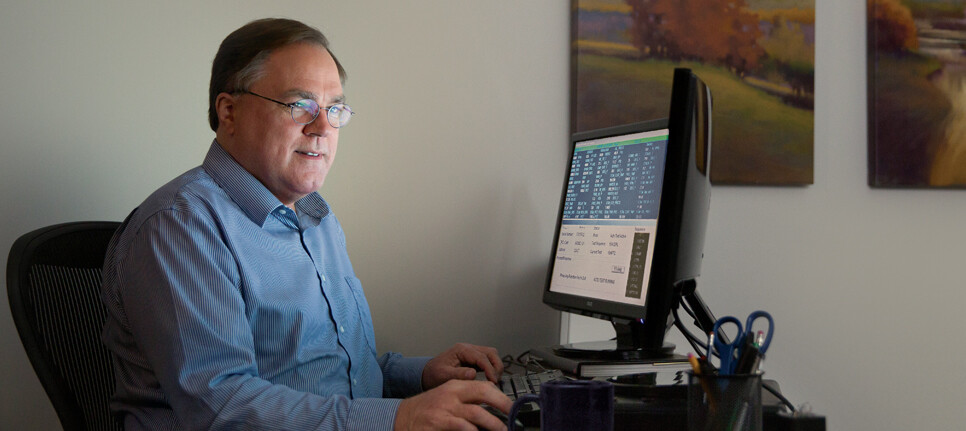 From the DukeHealth.org archives. Content may be out of date.
From the DukeHealth.org archives. Content may be out of date.
Corneal Transplant Advances Improve Vision

Tadd Torborg is back behind the wheel after undergoing a corneal transplant at Duke.
Tadd Torborg of Raleigh loves to drive. A deteriorating eye condition could have put him and his passion in the back seat. He's happy to be back behind the wheel after undergoing a partial corneal transplant in each eye.
Waiting for Corneal Disease Advances
Torborg, 55, proudly states "I've been to 48 states, all by car." The enjoyment he gains by seeing the world from the open road was put in jeopardy in 2004 when the software engineer was diagnosed with Fuchs Dystrophy. The condition damaged his cornea -- the transparent, front layer of the eye -- and caused progressive vision loss. “When I was diagnosed, doctors told me I should put off treatment for as long as possible because technology was changing so drastically,” he said.
Eight years later, Torborg’s vision was so foggy that his passion was at risk. “I was on the threshold of not being able to drive. At work I had to resort to cheats like hand-held magnifiers and bigger fonts on computer screens in order to cope,” he said. He turned to Duke corneal specialists for help.
They recommended a partial cornea transplant for both eyes. “They gave me a best-case, worst-case scenario,” said Torborg. “If I did nothing, I would go blind. I was scared of having surgery, but my career and the thing I loved doing most depended on it.”

I trusted Duke corneal specialists, so I agreed to let them try this new approach.
Improved Vision Within the Week
During a cornea transplant, a portion of the damaged cornea is removed and replaced with tissue from a donor. “My surgeon was as competent as one I would find anywhere,” he said. “I was lucky to be in Raleigh.”
The first transplant went smoothly, however, Torborg’s struggle to see continued until he underwent the procedure on his other eye six months later. “Even in just that short period of time, there were advances in treatment,” said Torborg. “I trusted Duke corneal specialists, so I agreed to let them try this new approach. My recovery was quicker with the second eye.”
Torborg’s vision improved within the week. “I still need trifocals, but I can see much better,” he said. Now, Torborg has his sights set on another road trip. “I’d like to drive from the tip of Italy up to Denmark.”


